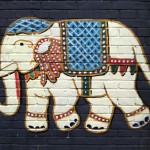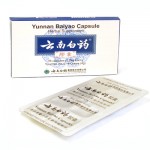 This article originally appeared on Dr Mahaney’s The Daily Vet column on petMD.
As they pertain to human and veterinary medical care, emergencies are times of significant distress for all involved parties. Having worked for many years in practices that offer critical care, I am well versed in the situational hardships experienced both by the pet owner and their injured or ill canine or feline companion.
Many veterinary emergencies involve varying degrees of trauma, including:
Hit by car
Animal fights
Knife wounds, impalement, and other penetrating injuries
Gunshot wounds
Snake bites
Falls from heights or down stairs
Other (There are so many more … feel free to share your experiences in the comments.)
All of the above can cause swelling (edema), bleeding (hemorrhage), bruising (ecchymosis), and pain, and have the potential for infection.
Other illnesses or emergencies lend more to issues associated with internal or external hemorrhage due to the body’s inability to effectively clot blood, including:
Rodenticide toxicity — ingestion of vitamin K antagonists, such as brodifacoum based d-COM, other
Immune Mediated Hemolytic Anemia (IMHA) and Thrombocytopenia (IMTP) — destruction of red blood cells (IMHA) and platelets (IMTP)
Caner associated coagulopathy — exhaustion of the body’s platelet supply from bleeding or the bone marrow’s insufficient platelet production caused by cancer or chemotherapy
When faced with bleeding, what can be done to control the flow before dangerous thresholds have been crossed? In the face of trauma, vessels providing blood to the affected site can be constricted by applying firm pressure with a sterile gauze or bandage, gel foam, cold compress, or tourniquet.
The situation is much more complicated when brodifacoum rodenticides are ingested, cancer or chemotherapy has caused bone marrow to produce insufficient red blood cells or platelets, or the immune system attacks itself. Appropriate treatment provided within a timely manner can succeed in stopping further blood loss. Oral or injectable medications, blood product replacement (packed red blood cells, whole blood, plasma, etc,), laboratory testing, and hospitalization are often necessary to ensure the patient’s safety until the blood clotting times are sufficiently within normal limits.
My holistic clinical practice integrates both western and eastern approaches, so I also consider the options for hemostasis from a non-conventional perspective. I use one of the most popular Chinese herbs used in veterinary medicine: Yunnan Biayao (YB).
This article originally appeared on Dr Mahaney’s The Daily Vet column on petMD.
As they pertain to human and veterinary medical care, emergencies are times of significant distress for all involved parties. Having worked for many years in practices that offer critical care, I am well versed in the situational hardships experienced both by the pet owner and their injured or ill canine or feline companion.
Many veterinary emergencies involve varying degrees of trauma, including:
Hit by car
Animal fights
Knife wounds, impalement, and other penetrating injuries
Gunshot wounds
Snake bites
Falls from heights or down stairs
Other (There are so many more … feel free to share your experiences in the comments.)
All of the above can cause swelling (edema), bleeding (hemorrhage), bruising (ecchymosis), and pain, and have the potential for infection.
Other illnesses or emergencies lend more to issues associated with internal or external hemorrhage due to the body’s inability to effectively clot blood, including:
Rodenticide toxicity — ingestion of vitamin K antagonists, such as brodifacoum based d-COM, other
Immune Mediated Hemolytic Anemia (IMHA) and Thrombocytopenia (IMTP) — destruction of red blood cells (IMHA) and platelets (IMTP)
Caner associated coagulopathy — exhaustion of the body’s platelet supply from bleeding or the bone marrow’s insufficient platelet production caused by cancer or chemotherapy
When faced with bleeding, what can be done to control the flow before dangerous thresholds have been crossed? In the face of trauma, vessels providing blood to the affected site can be constricted by applying firm pressure with a sterile gauze or bandage, gel foam, cold compress, or tourniquet.
The situation is much more complicated when brodifacoum rodenticides are ingested, cancer or chemotherapy has caused bone marrow to produce insufficient red blood cells or platelets, or the immune system attacks itself. Appropriate treatment provided within a timely manner can succeed in stopping further blood loss. Oral or injectable medications, blood product replacement (packed red blood cells, whole blood, plasma, etc,), laboratory testing, and hospitalization are often necessary to ensure the patient’s safety until the blood clotting times are sufficiently within normal limits.
My holistic clinical practice integrates both western and eastern approaches, so I also consider the options for hemostasis from a non-conventional perspective. I use one of the most popular Chinese herbs used in veterinary medicine: Yunnan Biayao (YB).
 This Chinese herbal product can help your pets bleeding, swelling, and pain.
YB was created in 1902 by Mr. Qu Huanzhang, a Chinese medicine practitioner. It helps to control bleeding and to "move blood to resolve stagnation and stop pain." Conditions YB is used to treat include "pulmonary tuberculosis bleeding, gastric hemorrhage, intestinal bleeding, internal cranium bleeding, gynaecological blood disease, and purpura (rash caused by bleeding from small blood vessels)."
I have used YB to reduce swelling, hemorrhage, and pain in patients having osteosarcoma (malignant cancer of bone), lacerations from dog fights, and epistaxis (bleeding from the nose) resulting from cancer’s damage of the sensitive lining of the nasal cavity. It is never the sole treatment, so I cannot definitively say if YB caused an improved clinical response as compared to using solely western therapies.
According to the Chi Institute’s TCVMHerbal.com, YB includes "progesterone, various saponins and alkaloids, and physiologically active compounds such as calcium phosphate", along with:
Pin-Yin Chinese Name/English Name
San Qi/Panax Notoginseng
Huan Shan Yao/Dioscorea opposita
Ku Liang Jiang/Dioscorea Parviflora
Chuan Shan Long/Dioscorea Nipponica
Bai Niu Dan/Inulae Cappae
San Yu Cao/Ajuga Forrestii
Lao He Cao/Geranium herb
YB can be taken orally or it can be topically applied to a traumatized area of skin. TCVM Herbal even indicates YB’s use in dogs, cats, and horses for twice daily dosing. The volume needed is dependent on the animal’s body weight, with dogs and cats requiring 1 capsule (250mg) for every 20-40 pounds. This recommended dosing can be quite variable, so it is important to follow the guidelines of a veterinarian who is experienced in the use of YB for the particular condition for which it is indicated.
Hopefully, your pets will be free from enduring traumatic injuries, toxic exposures, cancer, or other ailments which cause hemorrhage. Having YB on hand may be useful in the overall process for providing first aid - either out in the world or in your veterinarian’s office.
Thank you for reading my article. To receive my next article via email, sign up by following this link.
Please feel free to communicate with me through Twitter (@PatrickMahaney) and follow my adventures in veterinary medicine by friending Patrick Mahaney: Veterinarian Acupuncture Pain Management for Your Pets on Facebook.
Copyright of this article (2012) is owned by Dr Patrick Mahaney, Veterinarian and Certified Veterinary Acupuncturist. Republishing any portion of this article must first be authorized by Dr Patrick Mahaney. Requests for republishing must be approved by Dr Patrick Mahaney and received in written format.
This Chinese herbal product can help your pets bleeding, swelling, and pain.
YB was created in 1902 by Mr. Qu Huanzhang, a Chinese medicine practitioner. It helps to control bleeding and to "move blood to resolve stagnation and stop pain." Conditions YB is used to treat include "pulmonary tuberculosis bleeding, gastric hemorrhage, intestinal bleeding, internal cranium bleeding, gynaecological blood disease, and purpura (rash caused by bleeding from small blood vessels)."
I have used YB to reduce swelling, hemorrhage, and pain in patients having osteosarcoma (malignant cancer of bone), lacerations from dog fights, and epistaxis (bleeding from the nose) resulting from cancer’s damage of the sensitive lining of the nasal cavity. It is never the sole treatment, so I cannot definitively say if YB caused an improved clinical response as compared to using solely western therapies.
According to the Chi Institute’s TCVMHerbal.com, YB includes "progesterone, various saponins and alkaloids, and physiologically active compounds such as calcium phosphate", along with:
Pin-Yin Chinese Name/English Name
San Qi/Panax Notoginseng
Huan Shan Yao/Dioscorea opposita
Ku Liang Jiang/Dioscorea Parviflora
Chuan Shan Long/Dioscorea Nipponica
Bai Niu Dan/Inulae Cappae
San Yu Cao/Ajuga Forrestii
Lao He Cao/Geranium herb
YB can be taken orally or it can be topically applied to a traumatized area of skin. TCVM Herbal even indicates YB’s use in dogs, cats, and horses for twice daily dosing. The volume needed is dependent on the animal’s body weight, with dogs and cats requiring 1 capsule (250mg) for every 20-40 pounds. This recommended dosing can be quite variable, so it is important to follow the guidelines of a veterinarian who is experienced in the use of YB for the particular condition for which it is indicated.
Hopefully, your pets will be free from enduring traumatic injuries, toxic exposures, cancer, or other ailments which cause hemorrhage. Having YB on hand may be useful in the overall process for providing first aid - either out in the world or in your veterinarian’s office.
Thank you for reading my article. To receive my next article via email, sign up by following this link.
Please feel free to communicate with me through Twitter (@PatrickMahaney) and follow my adventures in veterinary medicine by friending Patrick Mahaney: Veterinarian Acupuncture Pain Management for Your Pets on Facebook.
Copyright of this article (2012) is owned by Dr Patrick Mahaney, Veterinarian and Certified Veterinary Acupuncturist. Republishing any portion of this article must first be authorized by Dr Patrick Mahaney. Requests for republishing must be approved by Dr Patrick Mahaney and received in written format.